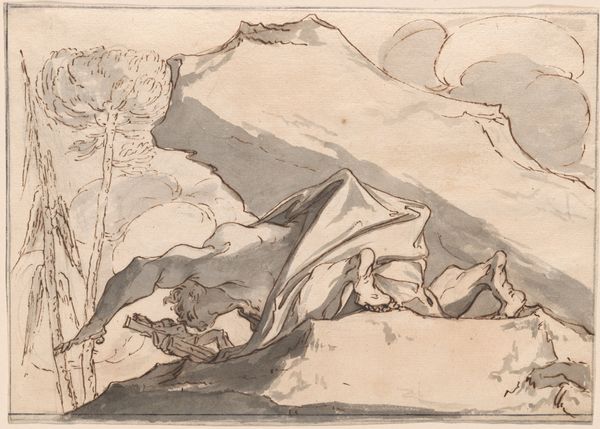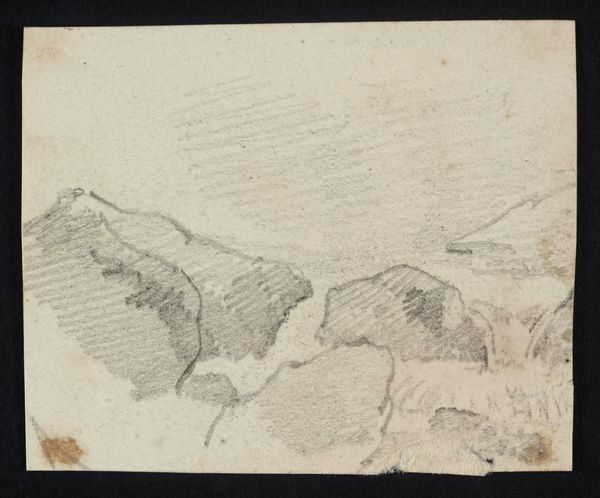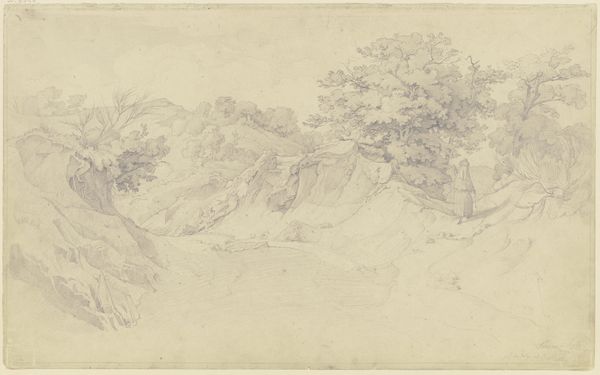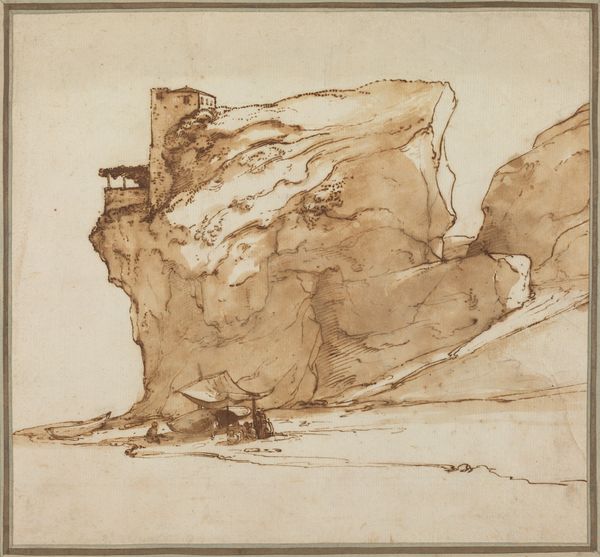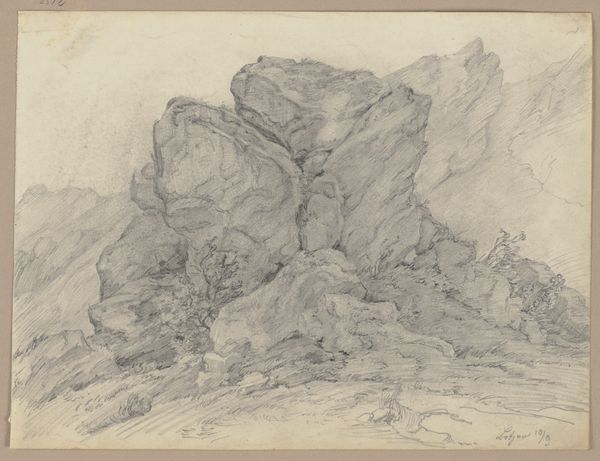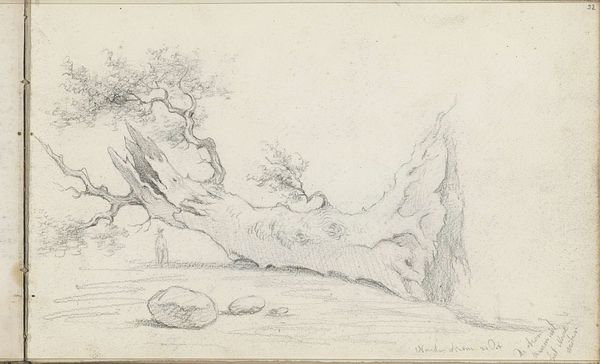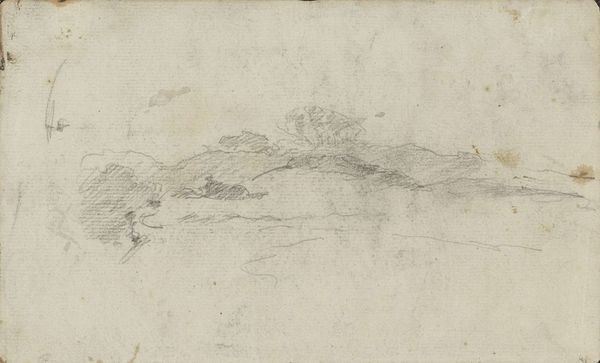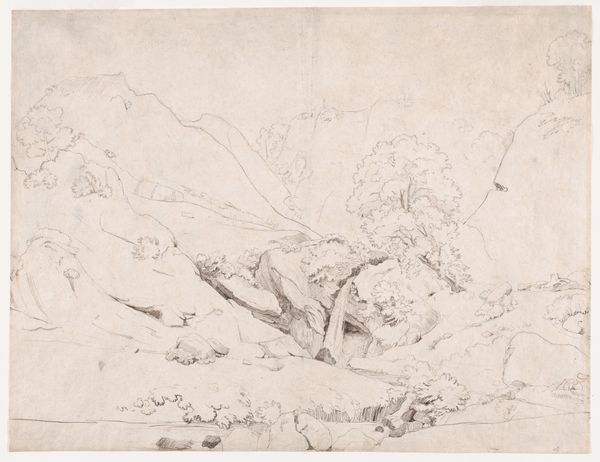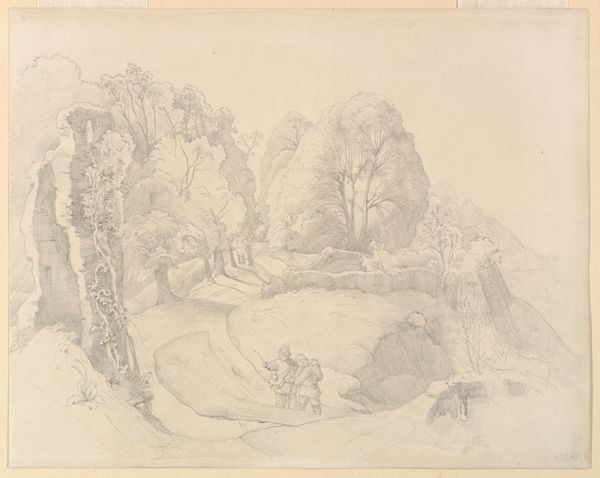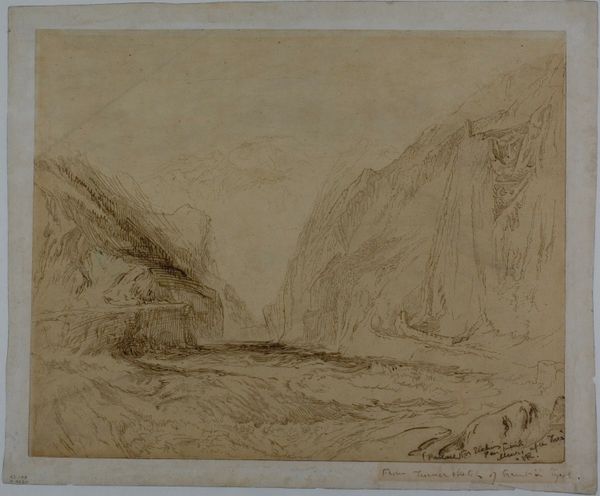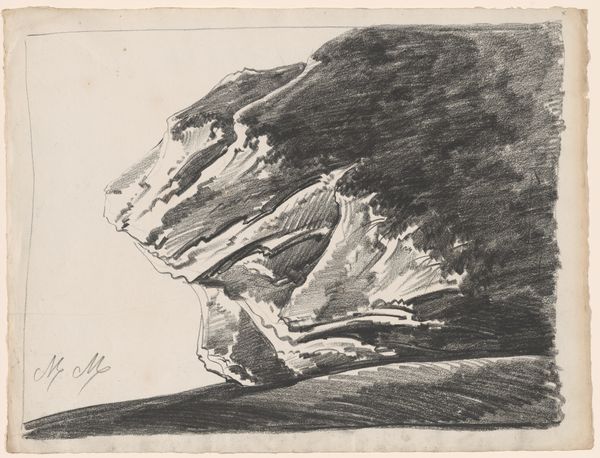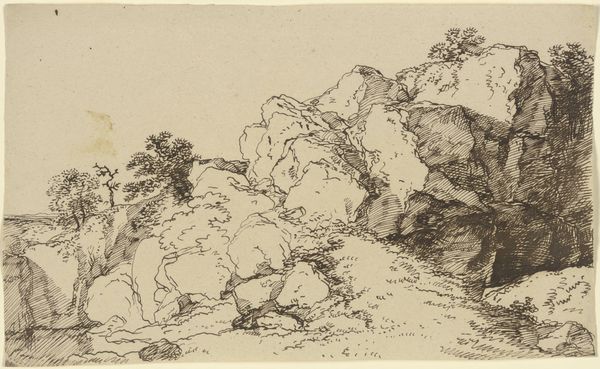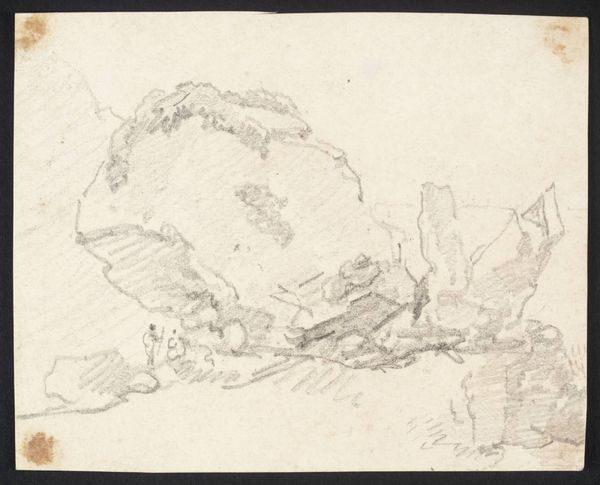
drawing, pencil
#
drawing
#
landscape
#
pencil drawing
#
romanticism
#
pencil
#
realism
Copyright: Public domain
Curator: Knud Baade’s pencil drawing, Fjellknaus, from 1836, captures a sense of Romanticism despite its seemingly simple subject. It’s currently held in the National Gallery in Oslo. What’s your first take on this? Editor: It feels remarkably still, almost like a petrified giant resting. The scale tricks you; it appears monumental yet is contained within the limits of what must be a rather small page. There's a stark contrast between the dark crevices and sun-soaked peaks that I think contribute to the scene's overall sense of foreboding, of something elemental and old. Curator: Indeed. It speaks to a universal, primal understanding of nature, which resonates with the Romantic movement's larger concerns about the sublime and humanity’s small place in it. In visual terms, the rocks almost resemble classical drapery, so although seemingly plain it evokes symbolic meanings for cultural memory. Editor: And there's that political undertone, of claiming space, almost violently asserting one’s place within the landscape – especially thinking about this in the context of Norwegian identity formation during the 19th century, as Norway was establishing itself, and its identity, amidst empires, it all comes through. This rock outcropping could be a metaphor for resistance. Curator: An interesting parallel. I'm drawn to how Baade renders this timeless geological form in humble pencil, finding beauty in the unadorned, while subtly layering in an awareness of its greater implications through the composition. A symbolic, but intimate study. Editor: I completely agree; it’s as if he's stripping back the romanticized grandeur, bringing this majestic landscape to a human scale so viewers can, like you say, engage with the intimate human experience of it, to wrestle with our own agency against that greater, sublime force of nature and identity. It reminds us how both are constructed through shared memory and material reality. Curator: So ultimately we look upon this sketch as a powerful memento, a piece of art that holds within it echoes of cultural endurance and environmental awe, made relatable to the common man by artistic humility. Editor: Yes, an enduring landmark representing not only physical strength, but that inner conviction so often fought for.
Comments
No comments
Be the first to comment and join the conversation on the ultimate creative platform.
